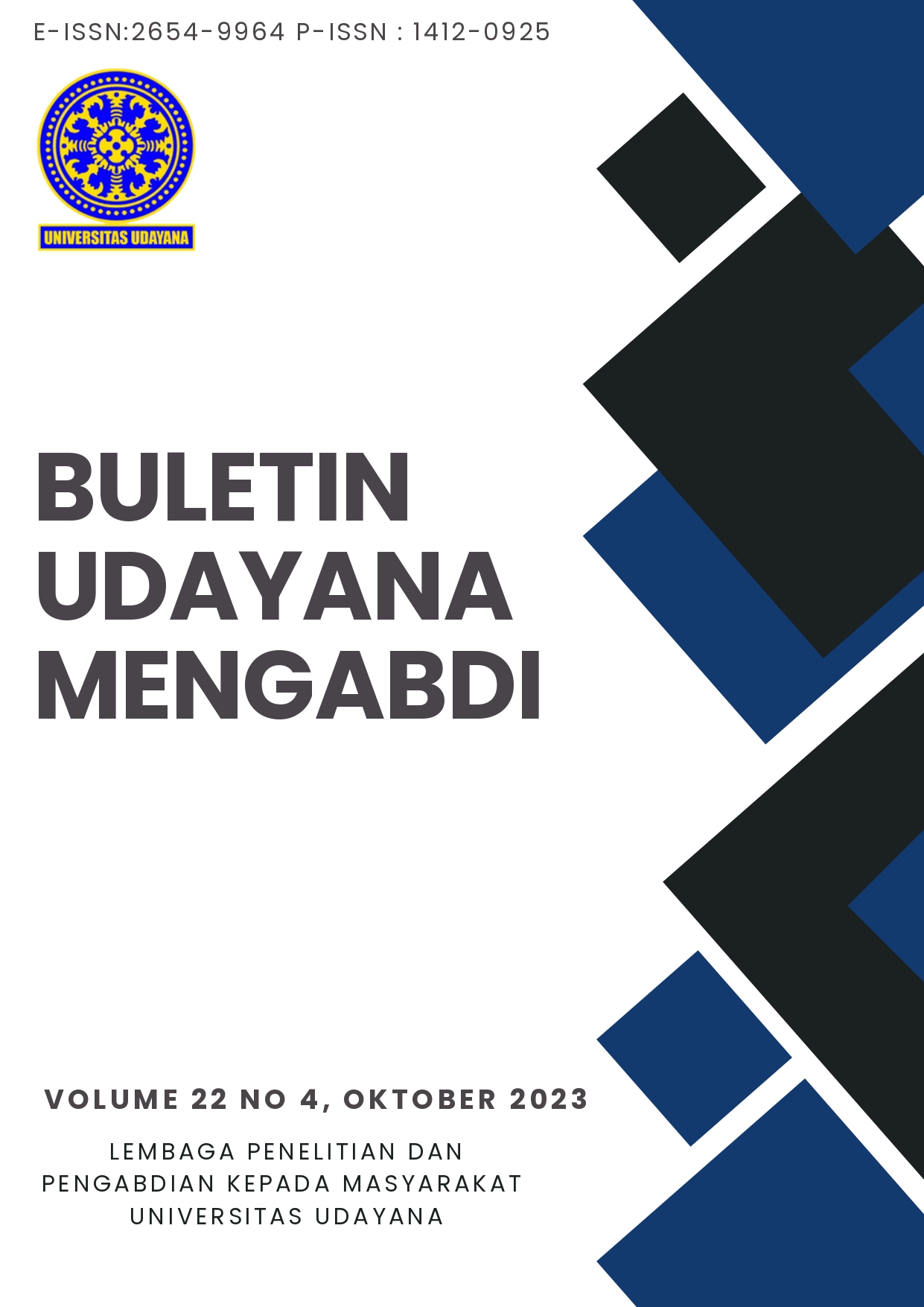MENGGALI POTENSI DESA UNTUK MEWUJUDKAN DESTINASI WISATA RELIGI
Abstract
The Sangketan Village Area Partnership Program, Penebel District, Tabanan Regency aims to create a religious tourism village through: (1) Structuring the Tamba Waras Temple with the taru premana arboretum and upakara plants; (2) Developing freshwater fish by keeping catfish as a tourist attraction and increase income; (3) Development of organic agriculture; and (4) Development and arrangement of BUMDes as a village-owned business facility by helping to process coffee into other products and helping to distribute community products. The methods applied to achieve these goals are through education, training, science and technology simulations, mentoring, and applied design and appropriate technology. The approaches used include: (1) transfer of appropriate technology to the community (2) Development of entrepreneurial insight, and (3) use of IT (e-commers to establish tourism attraction partnerships). Activities carried out include: (1) Socialization, coordination and setting targets; (2) the arrangement of the Tamba Waras Temple with the taru premana arboretum and upakara plants; (2) Development of freshwater fish (catfish) as a tourist attraction and increase the income of temple managers; (3) Development of organic agriculture; (4) Improvement and assistance of BUMDes as village-owned enterprises and production sites as well as distribution of community products; (5) Monitoring, supervision, and evaluation; and (6) Journal reporting and publication.
Keywords: aboretum taru premana, Bumdes, catfish, organic farming and religious tourism.
Downloads
References
Badan Perencanaan Pembanguanan Kabupaten Tabanan. 2017. Rencana Pembangunan Jangka Menengah Kabupaten Tabanan.
Badan Pusat Statistik (BPS). 2017. Kecamatan Penebel dalam Angka tahun 2017. Badan Pusat Statistik Kabupaten Tabanan.
Masrukan Ahmad, Fahmi Rafika Perdana, Kristiana Sri Utami, Sri Lestari Harjanta. 2019. Pengolahan kopi bubuk dan pemasaran berbasis digital marketing dalam meningkatka daya saing hilirisasi kopi di
kawasan lereng Menoreh. Jurnal Pengabdian Masyrakat, Vol. 3, No. 1. Universitas Slamet Riyadi,Surakarta.
Nugroho, Joko. WK, Lumbanbatu, Juliaty,& Rahayoe. S.(2009), Pengaruh Suhu Dan Lama Penyangraian Terhadap Sifat Fisik-Mekanis Biji Kopi Robusta, Prosiding, ISSN 2081- 7152.
Sardiana, I K. 2014. Taman Gumi Banten.Ensiklopedi Tanaman Upakara.Swasta Nulus Denpasar.
Sardiana, IK., NLR Purnawan. 2015. Community-based Ecotourism in Tenganan Dauh Tukad: An Indigenous Conservation Perspective. Jurnal Kajian Bali (Journal of Bali Studies) 5 (2), 347-368
Sardiana, IK., NLR Purnawan., 2016. Indigenous community, ecotourism and sustainability: Experience from Tenganan Dauh Tukad traditional. Heritage, Culture and Society: Research agenda and best practices in the hospitality and tourism ind | vol: | issue : | 2016-01-01 | Conference Proceedin
Putra, I Made Dwijantara; Setiyo, Yohanes; Sumiyati, Sumiyati. 2019. Pengomposan Sampah Canang dengan Model Pengomposan di Wadah Berbentuk Silinder. Jurnal BETA (Biosistem dan Teknik Pertanian . ISSN 2502-3012, vol. 8, no. 1, p. 79-85
Wardi, I Nyoman. 2011. Pengolahan Sampah Berbasis Sosial Budaya: Upaya Mengatasi Masalah
Lingkungan Di Bali. Bumi Lestari Journal of Environment. ISSN 2527-6158, vol. 11, no. 1, p. 167-177.

This work is licensed under a Creative Commons Attribution-ShareAlike 4.0 International License.

This work is licensed under a Creative Commons Attribution-ShareAlike 4.0 International License.




.png)


1.png) GARUDA - GARBA RUJUKAN DIGITAL
GARUDA - GARBA RUJUKAN DIGITAL



